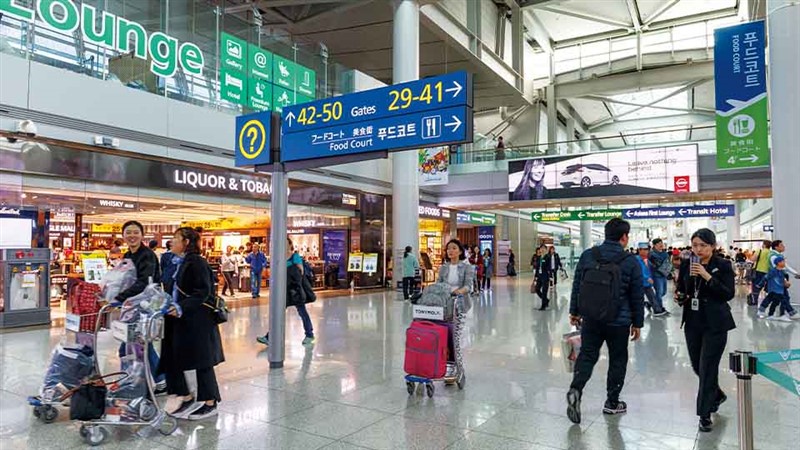2022.11 The Taiwan Banker NO.155 / By Alicia Garcia Herrero
The grand comeback: who are the winning sectors as Asia reopens?Banker's Digest
In a world filled with pessimism, Asia's reopening will leapfrog Europe and the US trends and bring rare optimism in many sectors globally. Airlines, hospitality, railway and travel spending are the clear winners and will rebound from a low base. It is time to move on. Asia has moved faster in reopening and lifting COVID-related border control. While China may be an exception, the rest of Asia will embrace a rebound from the long-suppressed demand. Based on the experience of European and US firms, we analyze the sectoral opportunities of a fast-tracked reopening cycle in Asia. The COVID stringency index shows Asia is now catching up with the rest of the world in removing restrictions, except China. Airlines, hospitality, railway and travel spending are the winning sectors. First, not all sectors have recovered to the pre-pandemic level globally, and the comeback of Asia will become a growth catalyst. Second, Asia is lagging global peers and the gap reflects the room for catching up and cyclical revenue rebound. Among all, airlines are the obvious winners of renewed air passenger traffic. Before the pandemic, the importance of Asia had been growing from 31% in 2011 to 35% in 2019. The COVID disruption will not change the structural drivers in favor of Asia. And the reopening will narrow the gap between global and APAC airlines. As of August 2022, global revenue has reached 72% of the pre-pandemic level, while APAC still struggles at 52%. Hotels will also welcome more guests, supporting the once-collapsed occupancy rate. Global hotel groups have continued to expand in Asia even during the pandemic to capture structural opportunities. The share of hotel rooms in Asia has overtaken Europe, rising from 19% in 2019 to 21% in 2021. Still, the cyclical story means there is space for growth as even the North American and European hotel occupancy rate has only recovered to 66% in Q2 2022, down from 80% in 2019. It has plenty of room for Asia to catch up as it only hovers at 49% now. With the comeback of tourists, railway firms will benefit from more intra-and-inter-city trips. Hong Kong and Japan are two examples of Asia with large railway networks and in the investable universe, and both benefited from the tourism boom before. Compared to global peers, European transit services (Deutsche Bahn and SNCF) have returned to 16% above the pre-pandemic level in Q2 2022, outpacing 72% in Asia. Regarding travel spending, booking platforms, travel retailers and cosmetics firms will see robust demand. International booking platforms have recovered to 97% and 88% of the pre-pandemic level. China-focused firms have expanded ten times since 2011 but only returned to 51% of the pre-pandemic level. The higher number of tourists will also benefit travel retailers operating duty-free stores. It is a rare sector whereas Asia performs better than its global peers. The reason is the spending power of Asian consumers are trapper domestically. While China is slow in reopening, Korean travel retailers saw growing market share before the pandemic and can bank on the recent reopening trend. The demand for cosmetic products will also rebound as domestic reopening means normalized consumer activities and inbound tourists will serve as another boost. Focusing on pure cosmetic firms, L'Oréal and Estee Lauder has seen their revenue reach 119% and 124% of the pre-pandemic level in Q2 2022. However, Shiseido and Amorepacific were still at 84% and 79% respectively. It shows Asian cosmetic makers are lagging global peers, but they are best positioned to capture the reopening opportunities as most of their revenue comes from Asia. Still, China's zero-COVID policy is a big mystery in Asia and the world in the face of reopening. The number of outbound Chinese tourists has vanished since 2020. Before that, Chinese tourists used to spent more than $250 billion around the world annually. Many economies in Asia have a large reliance on China for their tourism related sectors, and it is hard to fully compensate the losses. The uncertainties in lockdowns has also damped the sentiment of Chinese residents in domestic tourism with the share of tourism revenue to GDP falling from 5.8% in 2019 to 2.1% in Q2 2022. Therefore, even if China's border restrictions are relaxed in the future, it may take a long time to rebuild Chinese tourists' willingness to travel abroad if internal mobility control measures remain in place. In a world filled with pessimism, Asia's reopening will leapfrog Europe and the US trends and bring rare optimism in many sectors globally. Airlines, hospitality, railway and travel spending are the clear winners and will rebound from a low base. While Asian firms are the biggest beneficiaries cyclically, global firms will also receive a boost for their businesses in the region. It is also time for Asia to dismiss the drag from COVID and be the source of structural growth to the world again. The positive factors, such as population growth and the rising middle class, have not changed due to the pandemic. The greatest uncertainty is when China will open up and phrase out its zero-COVID policy. It is one of the most important economic factors shaping the cyclical rebound, not only in China but also in Asia and the world.


